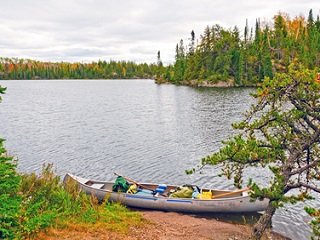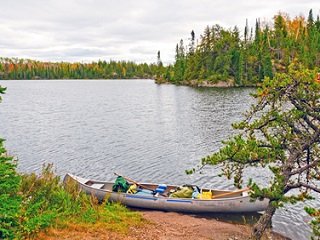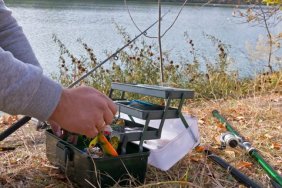 I like to canoe, and I know that thousands of others throughout the country share that passion. I also have experienced the stress and aggravation that can occur when you fail to properly secure your gear in the canoe, though. Fast currents, big waves, and strong winds can cause your gear to fall out of the canoe and carry them downriver quickly. In fact, unsecured bags can be miles downriver before you have a chance to begin looking for them. Today, I’ve provided some tips on how to secure your gear in a canoe so you don’t wind up watching a wayward backpack or article of clothing float away.
I like to canoe, and I know that thousands of others throughout the country share that passion. I also have experienced the stress and aggravation that can occur when you fail to properly secure your gear in the canoe, though. Fast currents, big waves, and strong winds can cause your gear to fall out of the canoe and carry them downriver quickly. In fact, unsecured bags can be miles downriver before you have a chance to begin looking for them. Today, I’ve provided some tips on how to secure your gear in a canoe so you don’t wind up watching a wayward backpack or article of clothing float away.
On shorter trips, or on calmer waters, it’s smart to secure your gear by running pack and dry bag straps around your thwarts, or by tying short load lines from each storage bag to the thwarts. Keep in mind that this won’t keep your gear in place if you should capsize, but it will keep your gear connected to the boat so it’s easier to collect should your boat flip.
On longer journeys, or trips where you’ll encounter rough water or rapids, you’ll need to make sure that your gear remains securely in place inside your canoe. This is important because bags that are tied loosely can get caught up on rocks, stumps, or trees. Furthermore, properly secured dry bags and dry boxes provide added buoyancy as long as they’re sealed correctly and the weight of the items inside does not exceed the weight of the water the bag takes up. This added flotation can mean the difference between a submerged, or pinned, canoe and one that can be righted quickly and paddled to safety.
It’s a good idea to go on a short trip before any long canoe camping trip, just to get a feel for securing your gear. Loading up your gear and paddling a local stream or lake will help you insure that everything fits and that your canoe handles well when fully loaded. If you’re feeling bold, you can even capsize your boat on purpose during your test run, to find out how effective your tie-down techniques are and whether or not any of your dry bags or boxes leak. Testing your gear and skills pays in dividends and having this knowledge beforehand before you get out into the wilderness is smart.
No one wants to be that guy; the guy who either goes for a swim to recover gear that falls out of your canoe, or who completely loses such gear to swift currents. Taking the time to properly secure your gear in your canoe is smart and will go a long way towards erasing any stress and inconvenience caused by losing your gear to the river.








